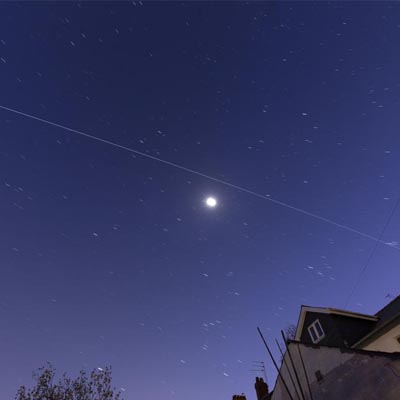The International Space Station (ISS) is the largest modular space station currently in low Earth orbit. The dimensions of the station are equivalent to those of a football field.
The orbit of the space station lasts just over 90 minutes, which corresponds to fifteen and a half times around the Earth in 24 hours. It can therefore sometimes be observed several times in the same night.
The space station is sometimes visible from the ground. It appears as a white point, brighter than a star or a planet, which crosses the sky in a few minutes without blinking. The best time to observe it is either before sunrise or after sunset.






